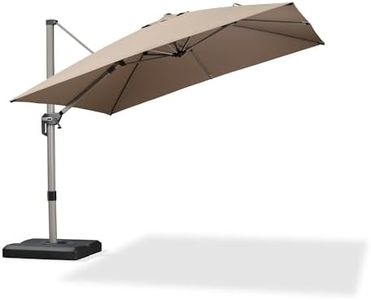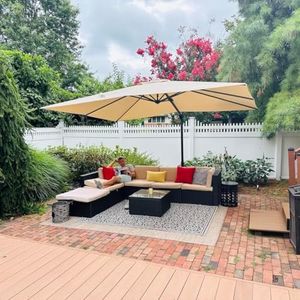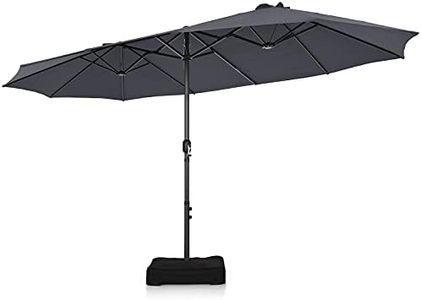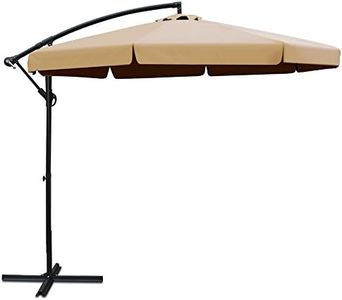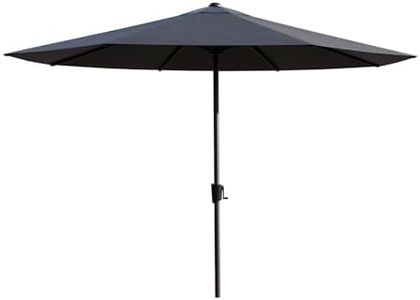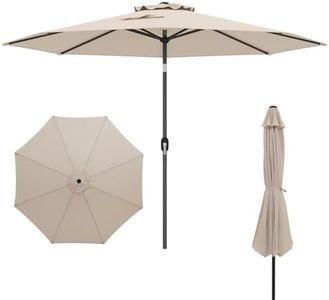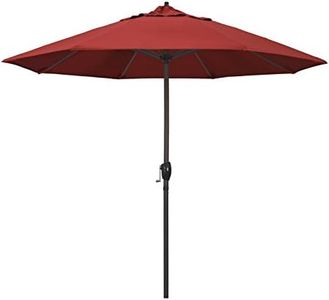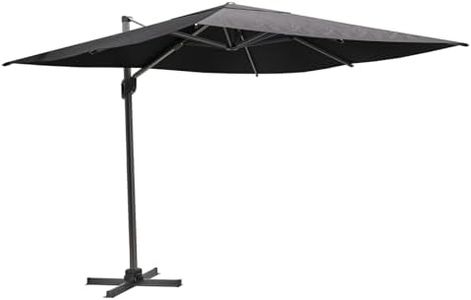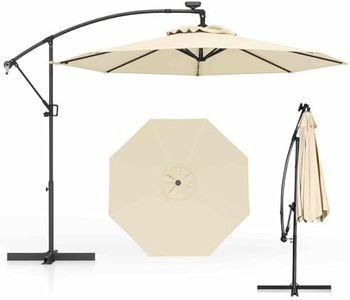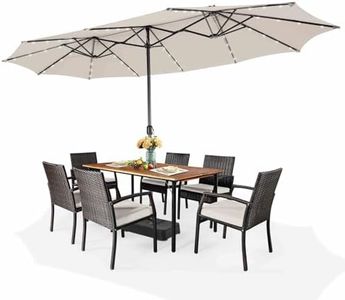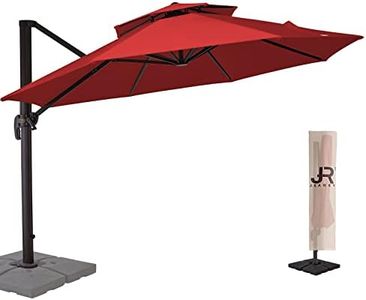We Use CookiesWe use cookies to enhance the security, performance,
functionality and for analytical and promotional activities. By continuing to browse this site you
are agreeing to our privacy policy
10 Best Outdoor Umbrellas
From leading brands and best sellers available on the web.Buying Guide for the Best Outdoor Umbrellas
Choosing the right outdoor umbrella can significantly improve your comfort and experience when spending time outdoors. The key is to think about where you’ll place it, how much shade you want, and how often you plan to move it. A good umbrella not only offers shade but also stands up well to wind, rain, and sun exposure, lasting for years with minimal upkeep.Size (Diameter or Length)Size refers to how much shade the umbrella can provide, typically measured by the diameter of the canopy. This is crucial because too small an umbrella may not provide enough coverage, while a very large one may be hard to manage and fit in tight spaces. Umbrellas under 6 feet are generally suitable for small bistro tables or limited spaces, 6 to 9 feet work well for most patio tables and small group seating, while 10 feet or larger are best for big dining sets or lounge areas. Think about how many people or what area you want to shade, measure your space, and pick an umbrella that adequately covers that area without overwhelming your yard or patio.
Canopy MaterialThe canopy material impacts both the durability and shade quality of your umbrella. Common materials include polyester, olefin, and acrylic. Polyester is cost-effective and fade-resistant but may not last as long as premium fabrics. Olefin offers better fade resistance and durability, while acrylic (such as Sunbrella) is highly resistant to fading, mildew, and moisture, lasting many seasons. Consider your climate and how much sun the umbrella will receive; choose a material that balances longevity and looks according to your usage and weather exposure.
Frame MaterialFrame material determines how sturdy and weather-resistant your umbrella will be. Aluminum is lightweight, rust-resistant, and easy to move, ideal for most situations. Steel is strong but heavier and may rust if not specially treated. Wood offers a classic look but requires more maintenance to avoid weather damage. If you plan to move the umbrella often, choose a lighter material; if it will be mostly stationary or in a windy spot, prioritize durability.
Opening MechanismThe opening mechanism is how you raise and lower the umbrella. Options include manual push-up, crank handles, and sometimes even pulley systems. Crank mechanisms are more convenient and easier for most people to operate, especially with larger umbrellas. Consider how often you’ll open and close the umbrella and your preference for convenience versus simplicity.
Tilt FunctionA tilt function allows you to adjust the angle of the canopy, which helps block the sun as its position changes during the day. Fixed umbrellas are simple and sturdy but provide shade only from directly above. Tilt umbrellas—manual or automatic—give you more flexibility to adjust your shade as needed. If your seating area is exposed to sun from multiple angles or you use the space throughout the day, a tilting feature can be extremely helpful.
Wind Vent or VentilationThe vent is an opening at the top of the canopy that lets air flow through, reducing the risk of the umbrella being lifted or damaged by wind. Single vents are standard, while double vents offer even more airflow. If your outdoor space is exposed to breezes or occasional strong winds, a vented umbrella is a wise choice to enhance safety and longevity.
Base CompatibilityThe base or stand keeps your umbrella stable and upright. Not all umbrellas include a base, and they vary in required weight—small umbrellas need lighter bases, while larger ones may need very heavy or specialized bases for safety. Make sure the umbrella pole fits securely in the base, and choose a base that matches the umbrella’s size and your local wind conditions to prevent tipping.
